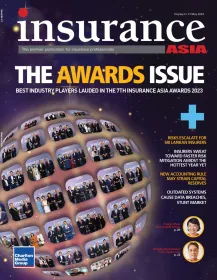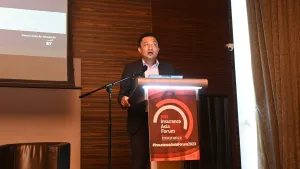Digital Dilemma: Risk or Resilience?
By Chris TanMaking data centres and telecommunications infrastructure more resilient to a wetter, hotter climate has never been more important.
As loss prevention engineers specialising in the resilience of data centres around the world, we have visited our fair share of locations where fire, flood, and other disasters have laid waste to the very data and telecommunications networks we are dedicated to protecting.
On the one hand, we can be grateful that cabling and servers were the only assets to suffer damage, but these scenes are a heavy blow, nevertheless. The threat is everywhere. Businesses and livelihoods hang in the balance. Clients and suppliers almost definitely face some sort of disruption, and some don’t recover.
As new technologies like AI and 5G mobile services trigger a rethink on everything from medicine to how we plan holidays, extreme weather events including flooding and heat waves have become chronic. The climate stakes are rising and with it, the vulnerability of Southeast Asia’s data centres and telecommunications is coming into sharper focus than ever before.
A data boom
Data centres are technology hubs that crunch, save, and dispense the data that make the most convenient facets of our daily lives possible. Cashless payments, streaming services, video calls, and much else depend on data centres.
Demand is booming. During the pandemic, demand for cloud computing in Singapore surged. According to GlobalData, a leading data and analytics company, the total addressable market size of data centres and hosting services in Singapore in terms of spending opportunity is set to increase at a compound annual growth rate (CAGR) of 6.1% between 2020 and 2025.
Investment into new data centres in Asia Pacific totalled $1.7b during the first three months of 2023 alone, eclipsing the total for all of 2022, when supply chain troubles made it tougher to secure semiconductors and other electrical components, according to an April report from real estate consultancy CBRE.
With most of those funds earmarked for greenfield sites and with demand for data centres exploding, the dilemma for operators will be whether to invest in new developments or boost the resilience of existing facilities to mitigate against natural disasters and other climate-related calamities.
Predicting climate impact
Damage caused by typhoons, flooding, as well as overheating owing to heatwaves already accounts for roughly three-quarters of accidents that lead to data centre outages according to FM Global’s internal data. The rise in extreme weather events means this is increasingly becoming a “when” not “if” scenario.
While a chronic problem, extreme weather events need not be random or unpredictable. Today, loss data gathered from Asia and around the world can be used to model the impact that businesses could potentially face from a natural disaster or extreme weather event. This same data can help determine what can be done to mitigate those potential losses, supported by engineering expertise.
This might include sealing roofs and windows to keep servers dry, lifting cabling away from flood-prone basements and installing proper drainage systems, especially in locations like Singapore, where heavy rain is commonplace.
Similarly, it might mean isolating batteries, which keep power flowing to servers until generators kick in during blackouts, in fire-resistant rooms, and not electrical rooms near servers as is often the case. Operators would also need to consider space for backup generators and maintain a 24-hour diesel fuel supply, despite the challenge of finding pre-existing structures with the needed strength and resilience to meet these requirements.
There’s a lot at stake. With more and more riding on the sector, outages are becoming more expensive if not more common. According to industry data, 60% of all outages at data centres resulted in at least $100,000 in losses in 2022, up nearly 40% since 2019, according to Uptime Institute, a US-based data centre consultancy.
Underneath the numbers though are untold stories of risk and disruption. In early 2023, a water leak at the Paris Global Switch Data Centre caused fire and outages, resulting in the disruption of cloud data services. A major data centre incident at Pangyo, South Korea in 2022 was caused by lithium-ion batteries and wasn’t brought under control for eight hours disrupting consumers.
The digital dilemma
Most of us know what it’s like when overloaded ride-hailing apps can’t get us a taxi on a rainy Friday, or when a video conference suddenly freezes and blacks out. Few of us know what it’s like to be forced offline entirely for hours by a natural disaster. That’s thanks in part to data centre systems that are carefully designed and built to withstand most disruptions.
But as our climate gets warmer, wetter, and less predictable, our daily lives, and maybe our livelihoods too, are increasingly at risk of being upended because the technical hubs that support them weren’t built with the long-term in mind.
It’s a very digital dilemma. Do data centre operators invest in resilience now to ensure their services can cope with extreme and unpredictable climate impacts, or do they endure the fallout from business disruption when those services fail?
When you think of it that way, it’s no dilemma at all.












 Advertise
Advertise












